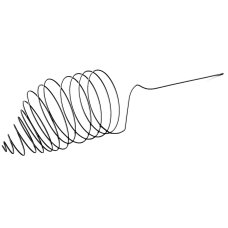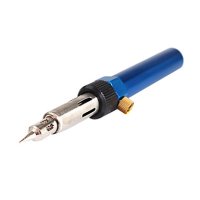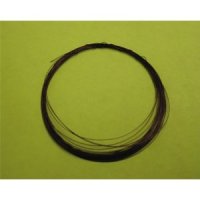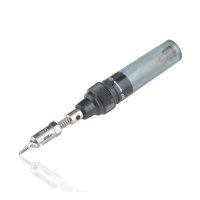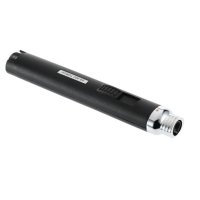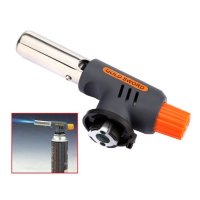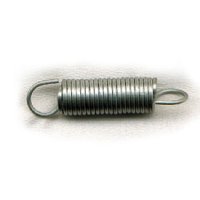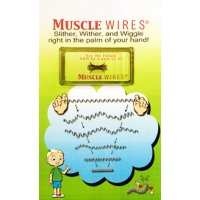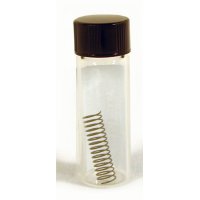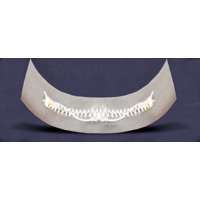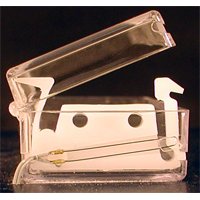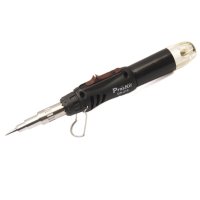Untrained, as-drawn Ni-Ti wire comes in various sizes, cross sections and temperatures. Form shapes and anneal to set to your desired shapes for springs, thermal actuators, ''memory wire'' magic tricks, etc.
Physical Properties:
- Density : 0.235 lb/in3 (6.45 g/cm3)
- Specific Heat : 0.20 BTU/lb * °F (0.2 cal/g * °C))
- Melting Point : 2370 °F (1300 °C)
- Latent Heat of Transformation : 10.4 BTU/lb (5.78 cal/g)
- Thermal Conductivity : 10.4 BTU/hr * ft * °F (0.18 W/cm * °C)
-
Thermal Expansion Coefficient
- Martensite : 3.67x10-6/°F (6.6x10-6/°C)
- Austenite : 6.11x10-6/°F (11.0x 10-6/°C)
- Poisson Ratio : 0.33
-
Electrical Resistivity (approx.)
- Martensite : 32 micro-ohms * in (80 micro-ohms * cm)
- Austenite : 39 micro-ohms * in (100 micro-ohms * cm)
Contents:
10 cm Nitonol shape memory alloy wire of chosen dia, as drawn
USEFUL LINKS
https://confluentmedical.com/tech-center/nitinol-facts/ (3rd bullet point)
Working with nitinol: http://store-musclewires-com.3dcartstores.com/assets/images/WorkingwithNitinol.pdf
Nitinol Shape Memory Wire (10 cm or more)
- Brand: Dynalloy INC
- Product Code: Dyna-Nitinol-Wire
- Reward Points: 2
- Availability: Back-order
-
रo 195.00
- Price in reward points: 195
Available Options
Related Products
Gas Soldering Iron 70W
Multipurpose Pen Shaped Cordless Butane Gas Solder Iron Key Features Lightweight and Por..
रo 695.00 रo 750.00
Flexinol Actuator Muscle Wire - LT (1Quantity = 10cm)
If you are looking for 1Meter. Please click here. Note: LT (Low temperature) Act..
रo 90.00
Gas Soldering Iron - MT 100
Pen type Gas Soldering Tool Features: Corrosion of metal screws loose heat of the kitche..
रo 750.00 रo 880.00
Butane Gas Jet Pencil for Welding, Cutting, Melting - Blow Torch - Portable
Jet Pencil Butane Gas Torch Camping ! Features: Refillable pencil jet torch. Ideal..
रo 385.00
Butane Gas Blow torch attachment for Brazing or Welding
One Touch Auto Butane Gas Torch Blow for Brazing & Soldering ! Attaches on top of a Butane cylin..
रo 845.00
Flexinol Actuator Muscle Wire - HT (1 Quantity = 10cm)
If you are looking for 1Meter. Please click here. Note: HT (High temperature) Actuato..
रo 90.00
Niti Tension Spring
Tension - When cool, can be extended or deformed to ~14 cm, using ~6N . Heated, contracts to ~29 mm ..
रo 930.00
Body Temperature Demo Spring
This is an intriguing little device. Looks pretty small and simple, doesn't it? It's small but i..
रo 741.00
Body Temperature Demo Spring in Glass Vial
This spring has the same amazing qualities as the Body Temperature Demo Spring, simply packaged for ..
रo 741.00
Bendsoft
The Flexinol actuator wire Bendsoft is used for micro miniature animation in small animated figures,..
रo 2,968.00
Latchbox
One of the best uses for Flexinol® actuator wire is in electronic locks. The Flexinol® actuator wire..
रo 2,968.00
Gas Soldering Iron - ProsKit GS-210
Gas Soldering Iron - ProsKit GS-210 Butane is easy to refill and check with see-through fuel win..
रo 4,295.00 रo 4,985.00

